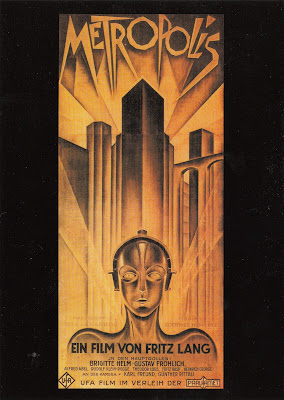Last weekend I was in Berlin and there I bought some cards for my collection.
The Friedrichstadt-Palast is the largest and most modern show palace in Europe. It was opened in 1984.
The German Resistance Memorial Center is a museum about all elements of opposition and resistance to the Nazi Regime. It is housed next to the Federal Ministry of Defence in the Bendlerblock, where the leaders of the 20 July Plot were shot.
The Picture Gallery is an art museum. It houses one of the World's leading collections of European paintings from the 13th to the 18th century and the largest part of the art collection of the Prussian Cultural Heritage Foundation. It was opened in 1830.
The Berliner Philharmonie is a concert hall acclaimed for its acoustics and architecture. It was built between 1960 and 1963 and is a leading example of the Vineyard style.
The Bauhaus Archive collects art pieces, items, documents and literature about the Bauhaus and shows them to the public. It was founded in Darmstadt in 1960 and in 1964 Walter Gropius designed a suitable museum building for the fast growing collection, whose construction was prevented by Darmstadt's local politics. Berlin agreed to give a new home to the archive and the museum was finally opened in 1979, but without retaining much of Gropuis' design.
At the museum's shop of the Bauhaus Archive I bought a special postcard showing the director's office at the Bauhaus Weimar, which finally completes my collection of German UNESCO World Heritage Sites. ^___^
I also bought postcards showing the Masters' Houses and the Bauhaus in Dessau. The Bauhaus and its Sites in Weimar and Dessau are since 1996 on the UNESCO World Heritage List.
The Olympiastadion Berlin was built for the 1936 Summer Olympics. Today it is used as venue for international football matches and concerts. It is also the home ground of Hertha BSC.
The Museum Island is one of the most important museum complexes in the World. Built between 1824 and 1930 it is home to the Old Museum, the New Museum, the Old National Gallery, the Bode Museum and the Pergamon Museum. The Museum Island is since 1999 on the UNESCO World Heritage List.
The Arsenal is the oldest still existing building on Unter den Linden. Since 1990 it houses the German Historical Museum, one of Germany's largest history museums.
The Bebelplatz is a public square on the south side of the Unter den Linden. Two famous buildings on the square are the Saint Hedwig's Cathedral and the Berlin State Opera. In May 1933 around 20000 books were burned on the square, when it was the site of one of the infamous Nazi book burning ceremonies.
The Saint Hedwig's Cathedral was built between 1747 and 1773 as the first Catholic church built in Prussia after the Reformation. It is the seat of the Archbishop of Berlin and a Basilica minor.
The Berlin State Opera was built between 1741 and 1743 and was back then the largest opera house in Europe.
Charlottenburg Palace is the largest palace in Berlin. It was commissioned by Sophie Charlotte of Hanover and was built between 1695 and 1703. Currently there are plans to house the Hohenzollern Museum in the palace.
The Abgeordnetenhaus (left building) became home of the Prussian House of Representatives in 1899 and in 1919 the Communist Party of Germany was founded there. Since 1993 it houses the state parliament of Berlin.
Just over the way, but divided by the Inner German Border for many years, lies the Martin Gropius Bau (right building), a famous exhibition hall.
 |
| The photo was taken in 1989. |
The Museum of Film and Television Berlin is a museum about the entire span of German film and television history. It was opened in 2000.
At the shop of the Museum of Film and Television Berlin I also bought two postcards about Metropolis.
Metropolis is a German expressionist epic silent science-fiction drama film. It was directed by Fritz Lang, aired in 1927 and is regarded as a pioneering work of the science-fiction genre in movies. Already short after the premiere it was changed and shortened and for many years attempts were made to reconstruct it. Finally in 2010 the film was 95% restored and shown on large screens in Berlin and Frankfurt. Metropolis is part of the Memory of the World Programme of the UNESCO.


















































